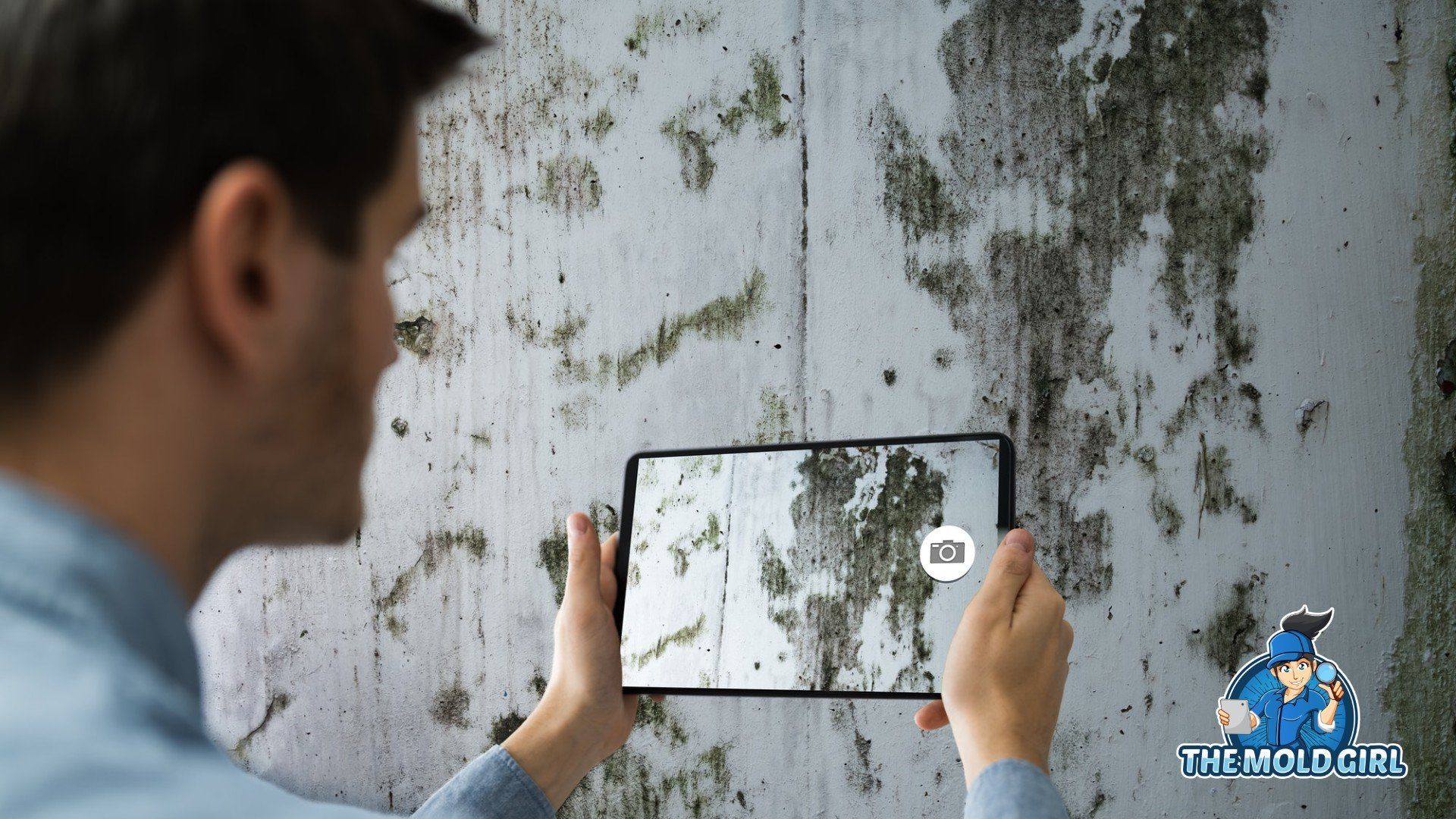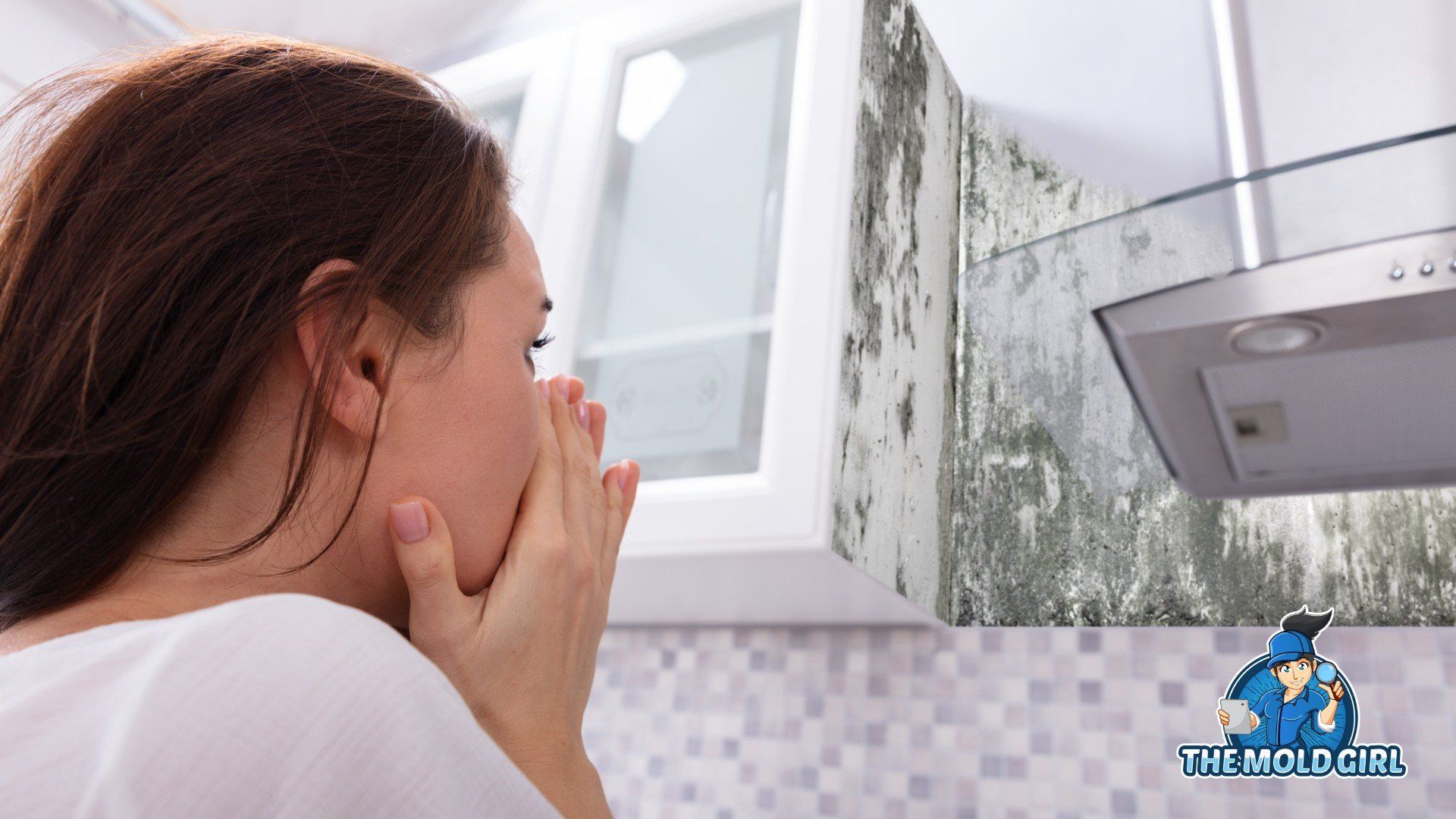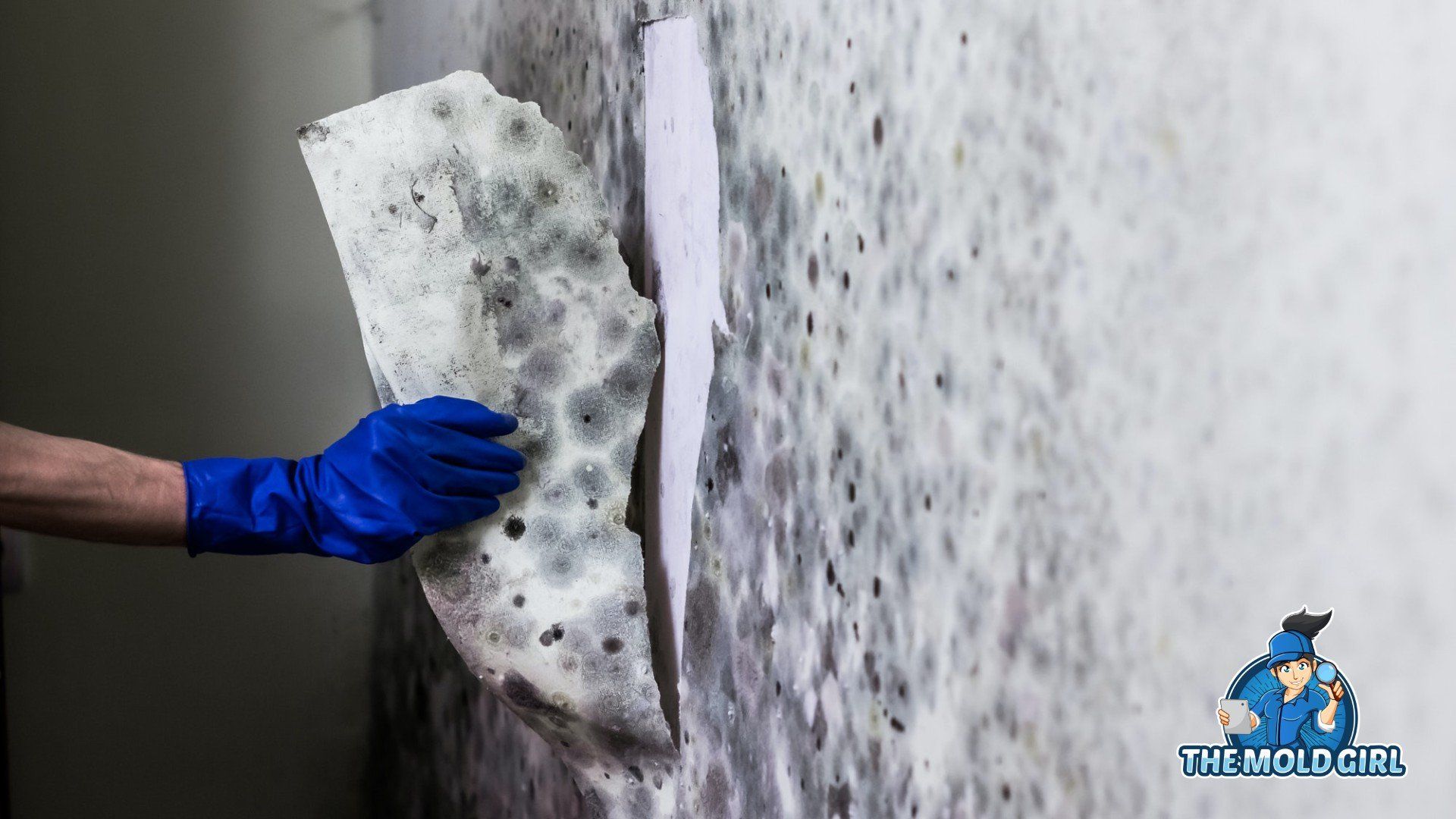IAQ, I have the letters big and bold as part of my vehicle wrap. Easy to fit on the car (although admittedly I have a huge truck) and obviously put next The Mold Girl Logo lets people know exactly what I do right? Wrong, well not completely wrong, but what I did not realize is how many people do not know that IAQ stands for and why it is so important. IAQ, is short for Indoor Air Quality, and it is super important as current studies show that we spend up to 90% of our time indoors. I personally like to think that I am a super active person, but even with that said, between sleep, showers, eating and work, I am inside probably close to that amount of time. Knowing that statistic, don’t you think it is time to start paying attention to the air we breathe or our Indoor Air Quality?
Indoor Air Quality simply defined is what is in the air in and around buildings. More technical it includes its physical and chemical makeup and how all combined affect the health and comfort of the building’s occupants. Not to be confused with IEQ which we will cover in another article, IAQ shouldn’t always be looked at as an issue, rather something to be aware of and monitor. As I am always traveling I go to many places where they have great Indoor Air Quality and can tell that they are taking proactive measures to maintain it, and on the flip side there are many places that I literally have to leave. These buildings with poor Indoor Air Quality may have visible water damage, mold growth, or just overall poor ventilation.
Let’s start by looking at exactly what makes up Indoor Air Quality so that you may begin to be aware of all it comprises, know what to look for, and possibly start improving your own. Let’s start with airborne particles which include dust, dust mites, smoke, dirt, skin flakes, and animal hair and dander. A perfect visual example is everything you see floating around in that stream of light that enters your window in the morning. Everything that is floating around, is what you are breathing in. Next is the VOC category which includes items such as hairspray, cosmetics, air fresheners, off-gassing from paint and new furniture. These are the things that you will not see, but will more smell. Lastly, there are the germs which are perhaps the one thing everyone understands. An office worker or child starts sneezing, and everyone breaks out the Lysol (which on a side note may kill the germs but is adding VOC’s).
As you can see, a lot goes into our Indoor Air Quality, and with up to 90% of our time spent indoors, let’s next look at how poor Indoor Air Quality can affect us. Poor Indoor Air Quality can have both short term and long term effects. Some of the immediate and usually short term effects include eye irritation, headaches, stuffy nose, dizziness, and fatigue. Most of these will occur during or directly after exposure and should go away relatively quickly. For me, if I am around Aspergillus/Penicillium I start itching as soon as I am exposed and then stop about an hour after leaving if the levels were not extremely high. As the levels I was exposed to go up, so does the recovery time, and additional symptoms like headaches start. Now while I have mentioned Aspergillus/Penicillium under short term exposure, this can also be classified as an effect of long term exposure due to it only affecting me after years of repeated exposure. I did not have any reaction to these species of fungal growth when I first started in this line of work 9 years ago. This is more how long term effects work. They do not show up right away and us, usually occur years after original exposure or repeated exposures. While everyone will react differently to different exposures, and doses of exposure will vary it is hard to pinpoint exact effects, however, cancer and asthma are among the most commonly linked long term effects.
As you can see some of the quality of your IAQ is a rather serious matter, so how do we begin to improve it? While there are many gadgets, machines, and purifiers that you can spend money on, some of the simplest things to do are free. Develop a routine cleaning schedule even starting with just vacuuming more often. How much does it disgust you when you empty the canister on your vacuum and see what you were walking around in? That itself should push you to clean more. Buy or make natural cleaning products to reduce VOCs and ventilate, ventilate, ventilate your home. While most open their windows when they are painting, most don’t even think twice about this when buying a new piece of furniture with a specialty finish on it. I once heard when you buy a piece of furniture leaves it in a separate room in the house for two weeks with the windows open until it has finished off-gassing. Now that is crazy in my opinion but possibly ventilate some. If you have water damage, call a professional remediation company immediately as mold can start within 24-48 hours in damp spaces, and monitor the relative humidity in your home. High relative humidity and lack of dehumidification are some of the most frequent calls I get for mold in the home. Lastly, just be aware and after reading this article, hopefully, you will be able to make educated choices.
Remember you spend the majority of your time in your home, working, or visiting other buildings. If you notice a building smells when you walk in or is dirty, you have the option to leave. I have done it many times over and will not eat or let my kids play at certain establishments knowing they have poor indoor air quality. I am not an extremist but are we aware of the possible health effects as you are now. If you would like your home inspected, tested, or assessed for it’s overall Indoor Air Quality, call The Mold Girl at 843-905-2448.
CONTACT THE MOLD GIRL TODAY!
The Mold Girl will do everything we can to ensure your experience with us is excellent.
REQUEST A FREE ESTIMATE
CHECKOUT RECENT POST




